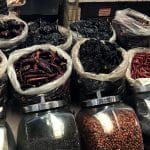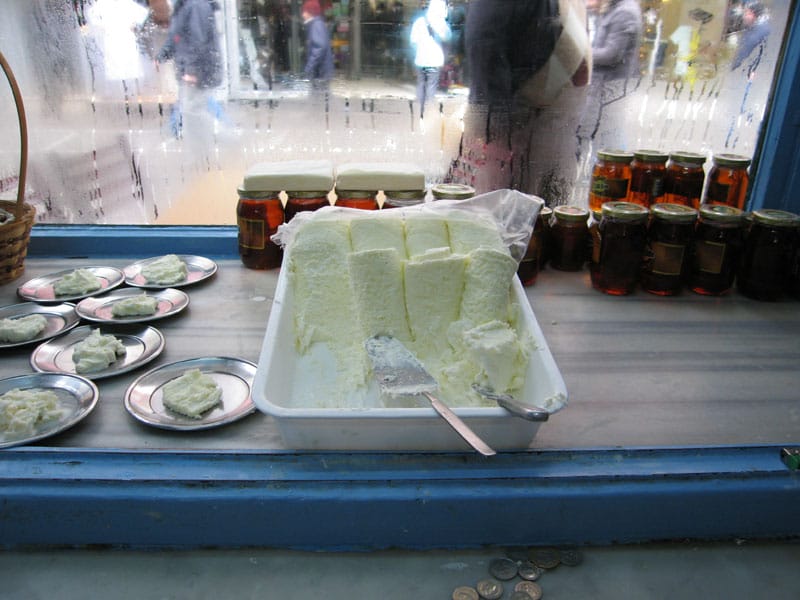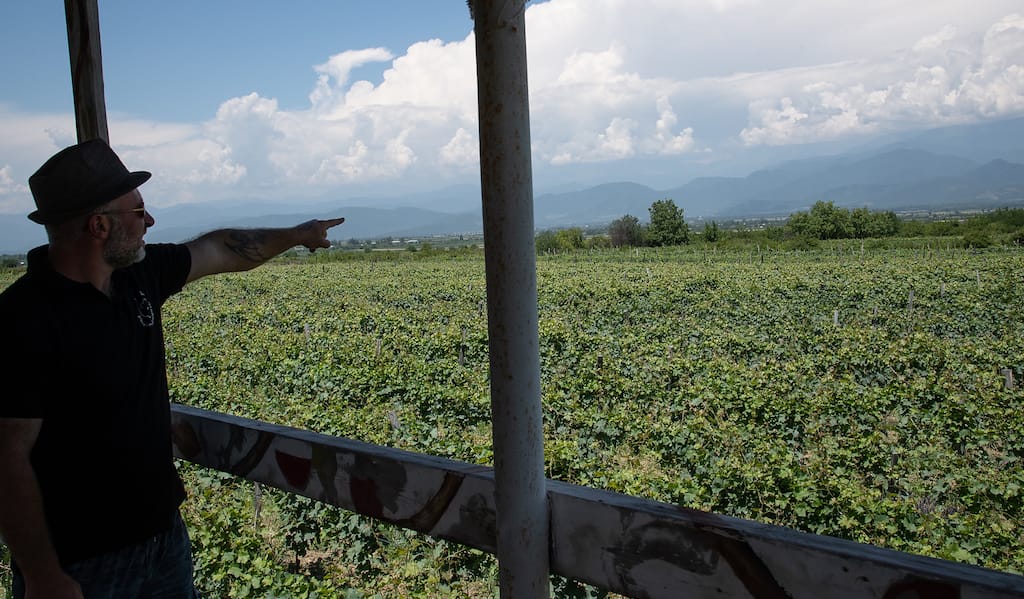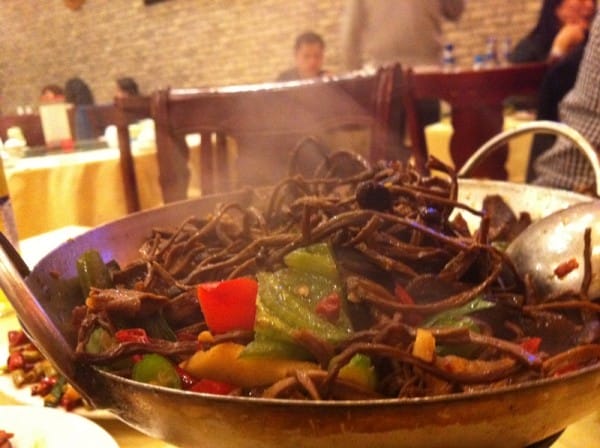Editor’s note: We are profoundly sad to report that Beşiktaş Kaymakçı has closed.
In our imagination, kaymak – the delicious Turkish version of clotted cream – is the only food served in heaven, where angels in white robes dish out plate after plate of the cloudlike stuff to the dearly departed, who no longer have to worry about cholesterol counts and visits to the cardiologist.
Perhaps we’re getting carried away, but kaymak can do that to you. For our money, the classic Turkish combo of kaymak served with honey and crusty white bread is one of the finest breakfasts anywhere.
The stuff is glorious, but simple. Milk – preferably from domesticated water buffaloes, known as “manda” in Turkish – is slowly boiled until a thick layer of very rich, pure, white cream forms at the top. After it cools, the kaymak is rolled up into little logs that have a consistency that hovers somewhere in between liquid and solid, with a creamy taste that’s both subtle and rich at the same time.
The stuff is also quite delicate, with a shelf life of barely one day. Still, purists refuse to refrigerate it, lest it lose its texture and pick up any refrigerator odors. Like we said, kaymak can make people get carried away.
Two of our favorite places to try kaymak are:
Beşiktaş Kaymakçı – This tiny shop/eatery has been in business since 1895, and it certainly shows its age. The marble counter is cracked and the paint on the walls peeling. But the kaymak, served up by the 84-year-old Pando, a living institution in Istanbul’s untouristed Beşiktaş bazaar, is out of this world. Prices here also seem unchanged since 1895: a plate of kaymak and honey, served with fresh bread and a glass of steaming hot milk, will set you back 4 lira.
Karaköy Özsüt – Compared to Pando in Beşiktaş, this place – open since 1915 – is a relative newcomer to the kaymak scene. Located on Istiklal Caddesi, Özsüt also serves up very good kaymak (as well as yogurt and rustic cheeses) made from the restaurant’s own herd of water buffaloes, whose pictures grace the walls.
 July 21, 2020 Kakheti Diary
July 21, 2020 Kakheti Diary
Georgia had planned to open its borders to tourists on July 1, and we had intended to do […] Posted in Tbilisi November 8, 2012 Hunan Xiangcun Fengwei
November 8, 2012 Hunan Xiangcun Fengwei
Dinner and a comedy routine isn’t a concept that has caught on in China. A few Sichuan […] Posted in Shanghai June 14, 2019 Building Blocks
June 14, 2019 Building Blocks
If Mexico had to choose a national flavor, the chile pepper would without a doubt be the […] Posted in Mexico City
Published on May 20, 2014
Related stories
July 21, 2020
TbilisiGeorgia had planned to open its borders to tourists on July 1, and we had intended to do some wine tasting in Kakheti about the same time – two plans that failed utterly. While no one is really sure why Georgia spent weeks preparing us for an open border only to snuff the plan at…
November 8, 2012
ShanghaiDinner and a comedy routine isn’t a concept that has caught on in China. A few Sichuan restaurants feature a traditional show with the help of some loud music, a man with a flashy cape, and a mask with many thin layers that changes with a quick, hidden tug. But a Hunan restaurant? Never. At…
June 14, 2019
Mexico CityIf Mexico had to choose a national flavor, the chile pepper would without a doubt be the winner. The only issue might be which chile would take the top spot in such an honor. The country is home to more than 200 variations of chiles, stemming from some 64 distinct varieties. Almost no meal is…
















































































